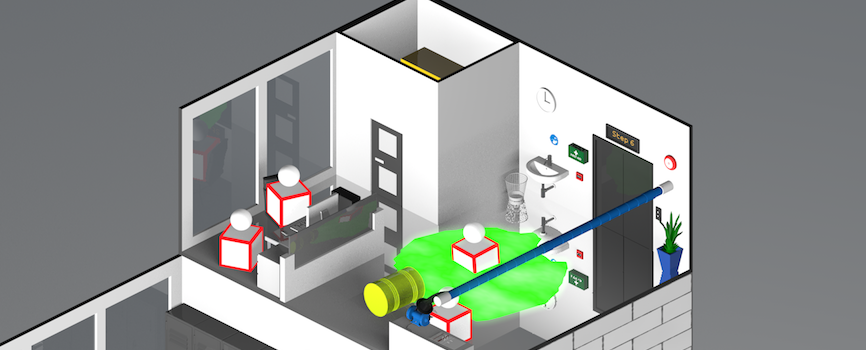What is eLearning?
Posted 5 years ago

The term eLearning is commonly used to describe a type of learning that can be accessed and delivered digitally. It is a portmanteau (blended) word derived from “electronic” and “learning”.
eLearning has been adopted by many organisations across the globe, and its popularity continues to grow. This is down to a number of different reasons, but it’s mainly due to organisations needing a convenient training solution that’s cost-effective and time-efficient, without compromising on quality.
The COVID-19 pandemic has also forced many organisations to adapt their ways of training staff; with many face-to-face and classroom trainers finding it difficult to provide training in the current climate, the market is expected to reach $398.15 billion by 2026.
A short history of eLearning
Organisations began to adopt eLearning back in the 90s, and technology was rather limited back then compared to today. This meant that the eLearning offered back then was likely to be a dull, unengaging PDF document sent to staff to read.
However, eLearning has been around for a lot longer than you might think. In fact, the history of eLearning dates back to 1924 when Ohio State University professor Sidney Pressey invented the “automatic intelligence testing machine”.
Fast forward to 1960 and PLATO, the first computer-based training program, was introduced to the world. However, this machine did cost $12,000 at the time, which, adjusted for inflation, is over $100,000 today!
Nowadays, it’s a completely different landscape. eLearning providers have the technical capabilities to offer high-quality, engaging content that is designed to be user-centric. Perhaps best of all, it’s way more cost-effective than back in the ’60s!
The types of eLearning
eLearning is an umbrella term for a variety of training methods. It covers Synchronous Learning, Asynchronous Learning, Bite-size Learning, and many others.
Synchronous Learning
Synchronous Learning, meaning “at the same time”, involves the interaction of learners with an instructor online in real-time. An example of this is Virtual classrooms. They are nothing else but real classrooms online. Participants interact with each other and instructors through video conferencing or other communication channels.
Asynchronous Learning
Asynchronous Learning, meaning “not at the same time”, allows the learners to complete the training course at their own pace, without any live interaction with an instructor. The information is accessible to the user 24/7. This has many advantages in comparison to Synchronous Learning as this kind of eLearning offers the learners the information they need whenever they need it.
Bite-size Learning
Bite-size Learning is a type of learning that offers information in easily-digestible chunks. This is a way of ensuring that the learner is engaged with the content and that they are taking in all of the information. Typically, Bite-size Learning is anywhere between 30-60 minutes of training, but it can be even shorter.
The benefits of eLearning
Now that you know a little bit about eLearning, you’re probably wondering what some of the benefits of eLearning might be.
Firstly, a word about classroom learning. We understand the need for classroom learning. iHasco staff are often put through classroom learning because there are a number of benefits in choosing this delivery method. With the main benefit being that you’re in a room full of people and can learn from each other.
As great as that might be, classroom learning’s downfall is that it’s effectiveness relies on a number of variables, including an engaging teacher, a present workforce, and a flexible budget.
Without these criteria, eLearning is almost certainly the best option for you.
With that said, here are the main benefits of using eLearning over/alongside classroom training…
Cost-effective
At face value, eLearning is more often than not the more affordable option. However, saving money using eLearning goes a lot further than the cost of the training.
Typically, eLearning is a quicker way to distribute and complete training, so organisations will have lost fewer working hours by training staff using eLearning rather than classroom training.
Additionally, classroom training can come with additional fees, such as booking a venue and paying expenses like food and travel.
Can be delivered anywhere
Nowadays, we can always find ourselves within arms reach of a device capable of browsing the internet. This is the only device required to carry out a training session!
This means that users can complete their training courses where they are most comfortable, and disruptions to their working schedules are minimised.
Reporting and management
We’re all used to classroom learning and grading. You sit in “exam conditions”, complete your test paper, and sit quietly until the end. After this, someone is required to read through all of the test papers and grade them.
On the other hand, eLearning can be completed in any environment an organisation sees as necessary, it gives instant feedback to the user and gives the employer the results of all the users tests in an easy-to-read format on a Learning Management System (LMS).
A good LMS will even allow you to log historic results in case it ever needs to be referred back to.
Performance & productivity
As eLearning allows users to train themselves quicker and easier than in a classroom setting, the user will automatically feel more engaged in the contents of the course as it’s a very visual way of learning, which means that the training course can deliver more information in a shorter period of time.
Users are more likely to feel motivated to further their professional goals through eLearning, as it gives them the opportunity to learn at their own pace and from a location of their choice.
Less environmental impact
Organisations should be making a conscious effort to reduce their carbon footprint as part of their corporate responsibility. eLearning is an effective method if you aim to have a lower environmental impact as it offers an alternative to paper-based learning and also means there is no need for unnecessary travel. In turn, it helps towards a more sustainable and environmentally-friendly workplace.
Scalability
Scalability is a huge advantage of eLearning over methods of training delivery. Generally speaking, it’s very easy to add more learners to an online course. As businesses grow, the skills their employees need often change. Therefore it is important for organisations to choose a training provider with scalability in mind.
Saves company time
Whether an organisation needs to implement changes to its training strategy or company policies, using an eLearning platform allows you to easily add them to your LMS. This can save you a lot of time on printing out physical documents, or chasing each employee to ensure they understand the changes.
Quick & simple delivery
Finally, eLearning has an advantage over other methods of training delivery due to how quickly it can be set up and rolled out. Where a face-to-face training session may take months of planning and preparation, eLearning can be rolled out almost instantly so long as the organisation knows what training they require.
As well as it being quick to roll out, it can also be very simple. Here at iHasco, clients are given their own dedicated Account Manager to make the process of setting up their training plan easier.
How iHasco can help your organisation
As a market-leading provider of online Health & Safety, HR, and Compliance Training, we will almost certainly have a selection of courses that will be relevant and beneficial to your organisation.
Our course library hosts over 100 accredited training courses that all provide a printable certificate upon completion of the end-of-training test.
All course purchases come accompanied by our free LMS – which is one of the many reasons why thousands of organisations of all shapes and sizes choose iHasco as their workplace training solution.
Browse our course library today or fill out the form below to start your free no-obligation trial!

Jack Rosier
Senior Marketing Executive
Related articles



Opt-in to our newsletter
Receive industry news & offers